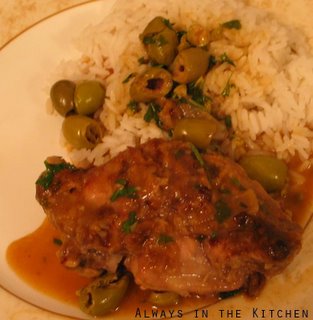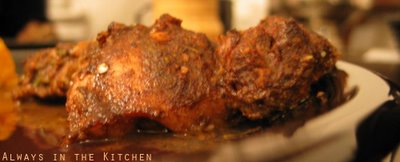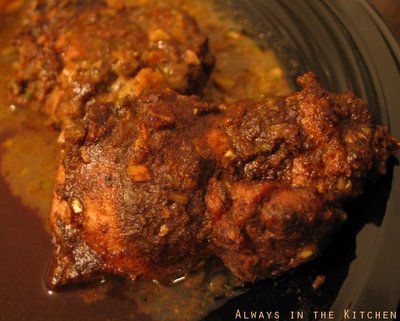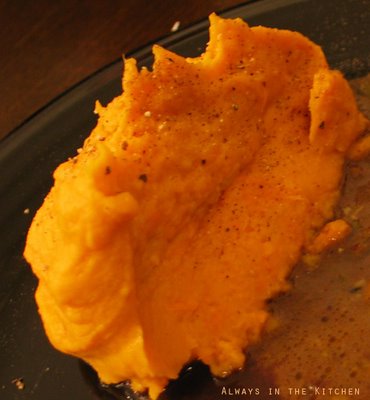 I've been eating more pasta these days. This is partly because I'm doing a fair amount of quick-cooking, and pasta responds very well to that sort of thing - where you make the sauce or, to be more Italian, i condimenti, from simple ingredients while the water comes to a boil and the noodles cook. It is also because pasta is relatively low on the glycemic index, making it a more desirable food (as long as I don't compensate by eating monstrous portions, but that hasn't been a problem) for me as I strive to find the right foods to offset my health challenges.
I've been eating more pasta these days. This is partly because I'm doing a fair amount of quick-cooking, and pasta responds very well to that sort of thing - where you make the sauce or, to be more Italian, i condimenti, from simple ingredients while the water comes to a boil and the noodles cook. It is also because pasta is relatively low on the glycemic index, making it a more desirable food (as long as I don't compensate by eating monstrous portions, but that hasn't been a problem) for me as I strive to find the right foods to offset my health challenges.When I was first cooking on my own, I still cooked for a family of three or four people, in terms of quantity. It was easier, more familiar, and I liked to have leftovers the next day. When I started getting tired of chewing my way through an enormous vat of chili or large casserole, pasta was one of the first dinners that I turned to for simple preparations for one or two people. At that time, I was all about the fettuccine. Preferably in a creamy sauce, thank you, which you can manage if you have a schedule that involves full time school, part time work, no car, and a fondness for nightclub dancing non-stop for four-hour stretches.
Linguine is a noodle whose charms I have only come lately to appreciate. I would flippantly dismiss it as spaghetti that got squished flat, and concluded that I might as well eat spaghetti as linguine. Subtlety, you might well have guessed - not my strong point. For the first time, a few years ago, I bought linguine under duress in an attempt to precisely follow a recipe in a magazine. This may have been because I had also recently read up on how it is very important to Italians to marry the correct sauce to each specific pasta shape. I worried that I had been going about it all wrong. Certainly, fettuccine was well matched to my creamy concoctions, but the linguini - ah, how to even express how much more elegant it was! Like the Linguine with Roasted Fennel recipe, it was an olive-oil based dressing that I made for the pasta. The noodles were slick, plump and shiny, without being weighed down by sauce. Each one slithered onto the fork almost of its own accord. It wasn't dry or uninteresting at all, and the amount of olive oil needed was about the same as is used in most more familiar pasta sauces just to saute the vegetables. Clearly, I was on to something.
 I still enjoy a good cream sauce, now and again, and of course I am no stranger to cheese. The simplicity of a slick of good olive oil, a few fresh herbs, and a few vegetables has become my standby easy dinner. What I put in it - depends on what I have lying about. I might toss some vegetables on a grill, or roast them in a hot oven. I might have some shrimp lurking in the freezer, or a jar of artichoke hearts, or I might not have anything more exotic than button mushrooms and some parsley, but it's amazing what you can do with them. Especially if you have a few treasures squirreled away to brighten up any dish - a little bottle of white truffle oil...a small box of beautiful Brittany Sea Salt...a good hunk of parmesan cheese. The variety is infinte, and up to the limits of your imagination or your pantry, depending on whether you're willing to stock for the eventuality.
I still enjoy a good cream sauce, now and again, and of course I am no stranger to cheese. The simplicity of a slick of good olive oil, a few fresh herbs, and a few vegetables has become my standby easy dinner. What I put in it - depends on what I have lying about. I might toss some vegetables on a grill, or roast them in a hot oven. I might have some shrimp lurking in the freezer, or a jar of artichoke hearts, or I might not have anything more exotic than button mushrooms and some parsley, but it's amazing what you can do with them. Especially if you have a few treasures squirreled away to brighten up any dish - a little bottle of white truffle oil...a small box of beautiful Brittany Sea Salt...a good hunk of parmesan cheese. The variety is infinte, and up to the limits of your imagination or your pantry, depending on whether you're willing to stock for the eventuality.
















